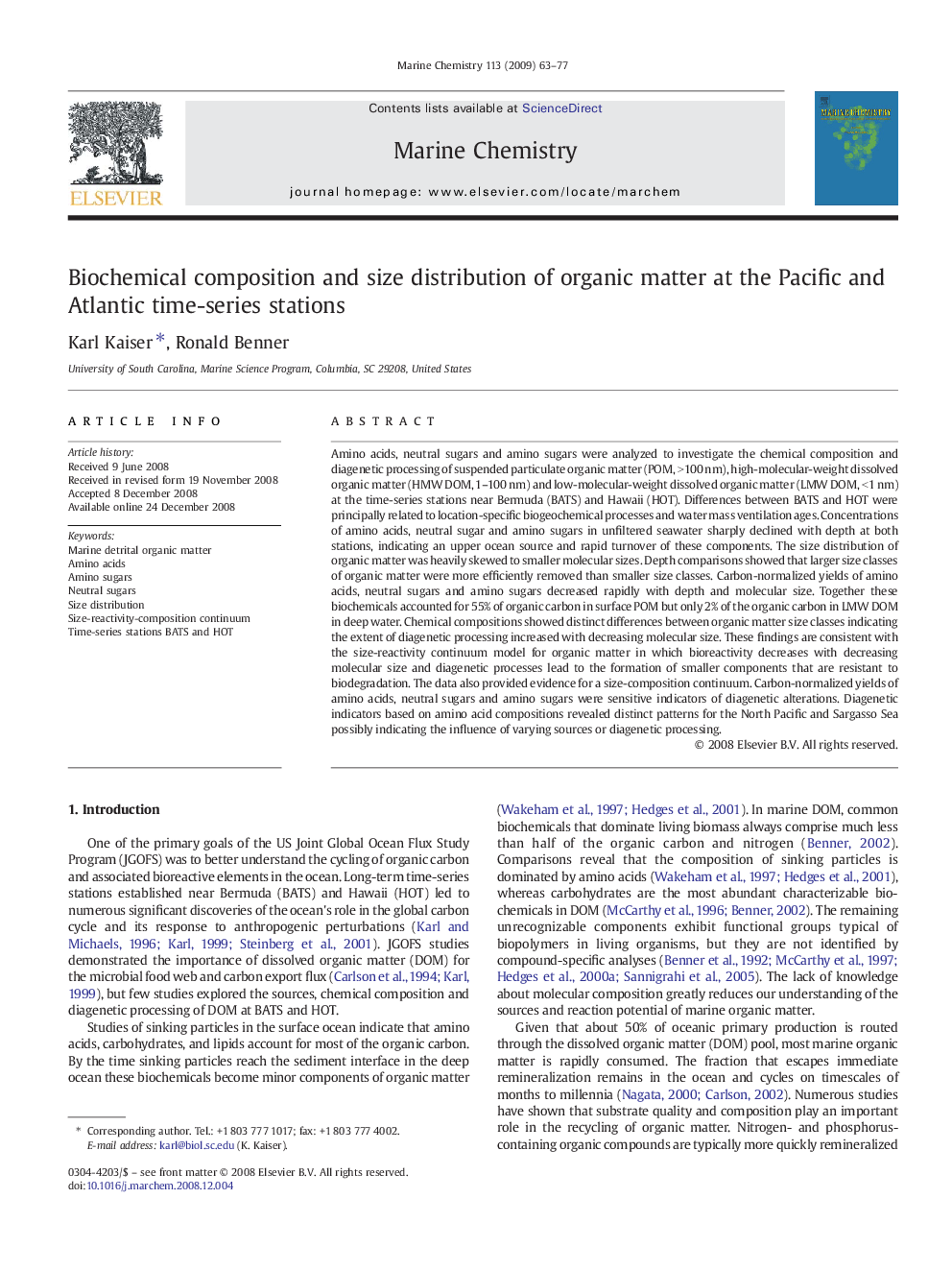| Article ID | Journal | Published Year | Pages | File Type |
|---|---|---|---|---|
| 1261845 | Marine Chemistry | 2009 | 15 Pages |
Amino acids, neutral sugars and amino sugars were analyzed to investigate the chemical composition and diagenetic processing of suspended particulate organic matter (POM, > 100 nm), high-molecular-weight dissolved organic matter (HMW DOM, 1–100 nm) and low-molecular-weight dissolved organic matter (LMW DOM, < 1 nm) at the time-series stations near Bermuda (BATS) and Hawaii (HOT). Differences between BATS and HOT were principally related to location-specific biogeochemical processes and water mass ventilation ages. Concentrations of amino acids, neutral sugar and amino sugars in unfiltered seawater sharply declined with depth at both stations, indicating an upper ocean source and rapid turnover of these components. The size distribution of organic matter was heavily skewed to smaller molecular sizes. Depth comparisons showed that larger size classes of organic matter were more efficiently removed than smaller size classes. Carbon-normalized yields of amino acids, neutral sugars and amino sugars decreased rapidly with depth and molecular size. Together these biochemicals accounted for 55% of organic carbon in surface POM but only 2% of the organic carbon in LMW DOM in deep water. Chemical compositions showed distinct differences between organic matter size classes indicating the extent of diagenetic processing increased with decreasing molecular size. These findings are consistent with the size-reactivity continuum model for organic matter in which bioreactivity decreases with decreasing molecular size and diagenetic processes lead to the formation of smaller components that are resistant to biodegradation. The data also provided evidence for a size-composition continuum. Carbon-normalized yields of amino acids, neutral sugars and amino sugars were sensitive indicators of diagenetic alterations. Diagenetic indicators based on amino acid compositions revealed distinct patterns for the North Pacific and Sargasso Sea possibly indicating the influence of varying sources or diagenetic processing.
